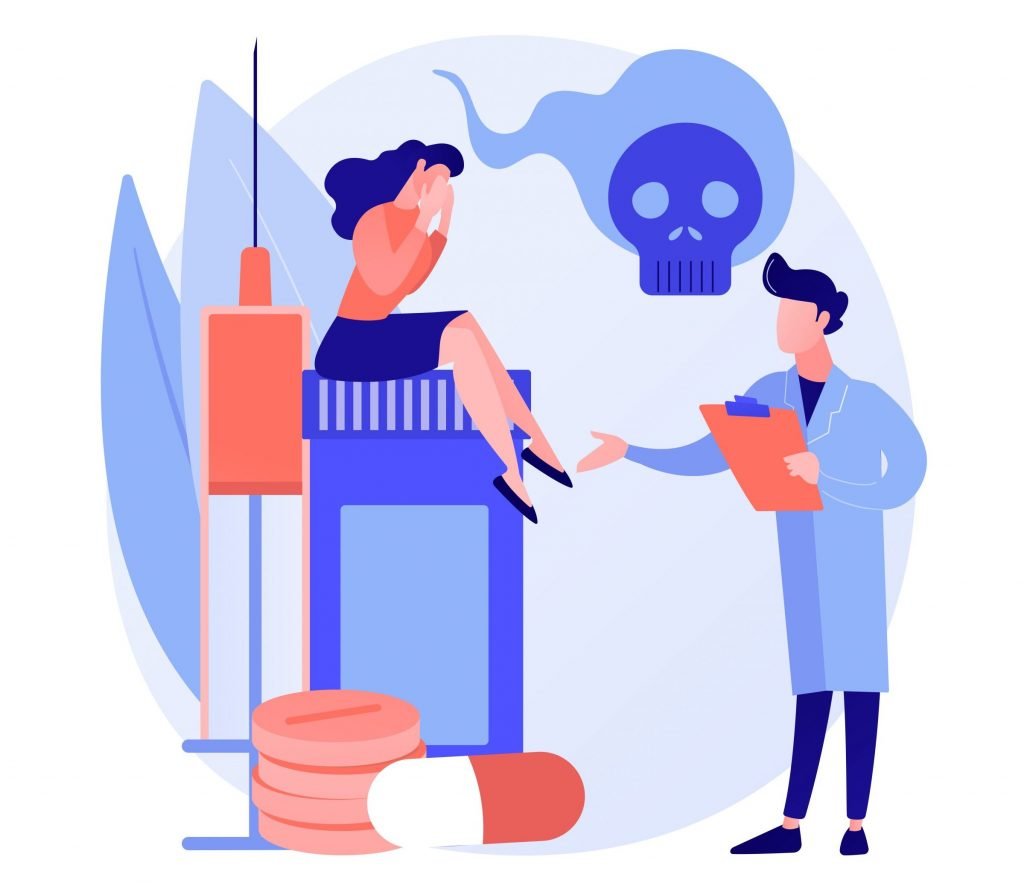Substance addiction can be an all-consuming struggle that affects every aspect of an employee’s life, and it doesn’t stop when they clock in for their job. Substance abuse in the workplace is more prevalent than many employers may realize, with 23% of employees admitting to using drugs or alcohol during work hours.
Not only does this have negative health implications for employees, but it can take a massive toll on employee engagement and productivity. Fifty-seven percent of employees who abuse drugs or alcohol lose upwards of ten hours of productivity each work week.
Addressing substance abuse in the workplace and implementing effective prevention and treatment measures are critical to promoting a healthy and productive work environment. This article covers potential indicators of employee substance abuse, prevention and treatment strategies, and key takeaways for employers.

Pressed for time? Here’s a quick summary…
- Employers should be aware of the warning signs of workplace substance abuse, which may include decreased performance and productivity, absenteeism and tardiness, and changes in appearance, speech, and mood.
- Substance abuse prevention and treatment starts with building a culture of health, educating employees, and offering wellness and cessation programs.
- Creating a positive, communicative, and supportive work environment is crucial for helping employees battling substance addiction.
5 Potential Indicators Of Employee Substance Abuse
Employee substance abuse can have serious consequences for both the individual and the business. Employers need to be aware of the warning signs of substance abuse in the workplace, as early detection and intervention can make a significant difference in helping employees get the necessary help while ensuring workplace safety and productivity.
It is important to note that while some indicators may suggest substance abuse, they may also be a consequence of other circumstances. These may involve emotional or financial distress, personal struggles, or simply having a bad day. The primary focus should be on recognizing when an employee is struggling and offering them appropriate support, regardless of the underlying cause.
1. Decreased Performance & Productivity

According to the National Institute on Drug Abuse, an employee with a substance abuse problem may experience a decrease in output and efficiency, miss deadlines, or display a noticeable change in overall job performance. They might also display a lack of motivation, spending more time on non-work-related activities, taking long breaks, or even falling asleep on the job. Drug or alcohol abuse can affect an employee’s ability to concentrate, remember tasks, and react quickly, leading to increased mistakes.
2. Absenteeism & Tardiness

Frequent absenteeism may indicate an employee is struggling with an addiction. Employees who abuse substances experience greater job turnover due to overusing sick days. They may also arrive late or come into work with a hangover, commonly on Mondays. Drug and alcohol abuse can cause sleep disruptions and make it challenging to maintain a consistent schedule.
3. Physical Appearance

Physical symptoms can reveal potential drug or alcohol abuse, such as bloodshot eyes, dilated pupils, and pale or flushed skin. An employee struggling with addiction may also experience rapid weight gain or weight loss and show a general lack of interest in personal care, appearing unkempt and poorly dressed. They may smell like alcohol, tobacco, or chemicals, an indication they were partaking in substances.
4. Speech Changes

An employee under the influence of drugs or alcohol may exhibit slurred or incoherent speech. They may also speak slowly, pause for long periods, or have difficulty concentrating on the conversation. Changes in breathing patterns, such as taking more rapid breaths, may also reflect the use of certain drugs.
5. Personality Changes & Mood Swings

The American Addiction Centers cites personality changes and mood swings as common signs of substance abuse. While depression and occasional moodiness can occur for non-substance users, dramatic changes like paranoia, hostility, and being withdrawn or more talkative than usual are potential indicators of substance abuse.
Workplace Substance Abuse Prevention & Treatment
Substance abuse in the workplace can lead to increased health care costs, decreased productivity, and a higher risk of workplace accidents and injuries. However, there are practical solutions that employers can implement to address and prevent substance abuse among their employees.
1. Culture Of Health

To prevent substance abuse among employees, it is essential to establish a culture of health within the workplace. This establishes a foundational support system and provides them with firsthand access to the many benefits linked with leading a healthy lifestyle.
A culture of health encourages healthy behaviors by aligning company policies, practices, and norms to support employee well-being. This can increase productivity, boost energy levels and morale, and empower individuals to take control of their health outcomes.
To combat substance abuse, employers should implement a drug-free work policy with written substance abuse policies that include:
- Purpose and objectives of the policy, including alignment with a culture of health.
- Definition of substance abuse.
- Educational opportunities and resources for employees struggling with substance abuse.
- Roles and responsibilities of supervisors and managers enforcing the policy and responding to potential substance abuse issues.
- Employee rights to confidentiality.
- Frequency and timing of drug or alcohol testing, if applicable.
- Consequences of failing a drug or alcohol test, if applicable.
Healthy habits can be normalized in various ways, from encouraging mindfulness and meditation breaks to catering nutritious lunches. For those attempting to quit substances, keeping the office stocked with gum and hard mints can be effective in managing cravings and withdrawal symptoms. When employees experience the positive impact of healthy behaviors in their lives, they become more motivated to make changes in other areas, including substance cessation.
2. Education

Employers can build awareness and foster safe behaviors by educating employees about the health risks and productivity hazards of alcohol and drug abuse. Education should not be one-and-done, but rather an ongoing process that includes all employees’ participation. These educational opportunities should guide those personally battling substance misuse and others who want to support family members or peers dealing with addiction. Additionally, providing information on available resources and employer-sponsored benefits can encourage employees to seek help for themselves and others.
By equipping employees with the knowledge and skills to recognize signs of substance abuse, they can take part in intervention and prevention, fostering a healthier, more supportive work environment. It can also reduce the stigma surrounding substance abuse and addiction, making it easier for employees to reach out for assistance if they are struggling.
3. Overdose Emergency Preparation

The opioid epidemic continues to claim countless lives, including those in the workplace. With over 107,600 US deaths due to opioid overdoses in 2021, it’s clear that urgent action is needed to combat this devastating issue. Employers have the unique opportunity to prevent fatalities should an overdose occur in the workplace.
Naloxone is a proven way to save the life of someone from an opioid overdose, and now, with Narcan—the over-the-counter nasal spray version of Naloxone—it’s easier than ever to have this tool on hand. The Bureau of Labor Statistics reported nearly 400 opioid overdose deaths at work in 2020, highlighting the important role employers have in tackling this epidemic. It’s important to act fast in the event of an overdose, as EMS response times can be delayed. This is why the CDC recommends having naloxone as part of their safety kits, establishing naloxone protocols, and preparing an action plan for responding to an opioid overdose.
4. Workplace Wellness Program

Implementing a holistic wellness program is an optimal strategy for building a culture of health and improving all dimensions of employees’ well-being. This program should include initiatives that help employees manage emotional, financial, and occupational stress while improving physical health outcomes through nutrition and exercise. This can indirectly help those dealing with substance misuse by reducing stress levels and encouraging healthier coping mechanisms.
5. Employee Assistance Programs

Employee assistance programs (EAPs) are a valuable resource for employees dealing with various issues, including substance use. These programs provide access to counseling, referrals, and educational resources, helping employees manage personal and work-related problems. By offering EAPs, employers can proactively address issues that can lead to workplace conflicts, health problems, and low morale. EAPs also provide confidential substance abuse screening, education, referrals to treatment, and support during treatment, which can help employees overcome their addiction and improve their overall wellness. By pairing EAPs with other health benefits, employers can help reduce substance use and health risks.
6. Cessation Programs

It has become increasingly clear that substance addictions are chronic conditions, much like diabetes or hypertension, and should be treated with the same care. By offering cessation programs that provide individualized guidance, employees can feel that their addiction is being taken seriously as a medical condition. This can be part of a workplace wellness program, through EAP, or offered as a standalone program.
For instance, a tobacco cessation program can include a personalized quit plan, coaching or counseling services, and nicotine replacement therapy. Cessation programs may also offer group support sessions, active online communities, and access to medications that can help manage withdrawal symptoms. Investing in these programs demonstrates an employer’s commitment to employees’ health, reduces stigma and fear of judgment or retribution, and creates a workplace culture of understanding and compassion.
Key Takeaways For Employers
Thankfully, drug or alcohol addiction is treatable with the right strategies. There are a few things supervisors and managers should keep in mind when supporting employees who struggle with addiction.
- Positive Feedback: Managing employees through criticism and fear-based tactics will only result in a toxic work environment and decreased morale. Prioritize constructive and informal feedback to communicate standards and praise healthy behavior.
- Open Communication: Opening the lines of communication between employees and supervisors is crucial to creating a relationship of trust and transparency. When communication is consistent and nonjudgmental, employees feel comfortable seeking help and sharing ideas on how they can be better supported.
- Advocate For Employees: Advocating for employees involves viewing them as human beings who may be struggling with a medical condition rather than merely a means to produce output. Encourage employees to seek help and give them grace during the low points of their journey when they may not be performing at their best. However, holding them accountable is just as important for their own well-being and the organization as a whole.












